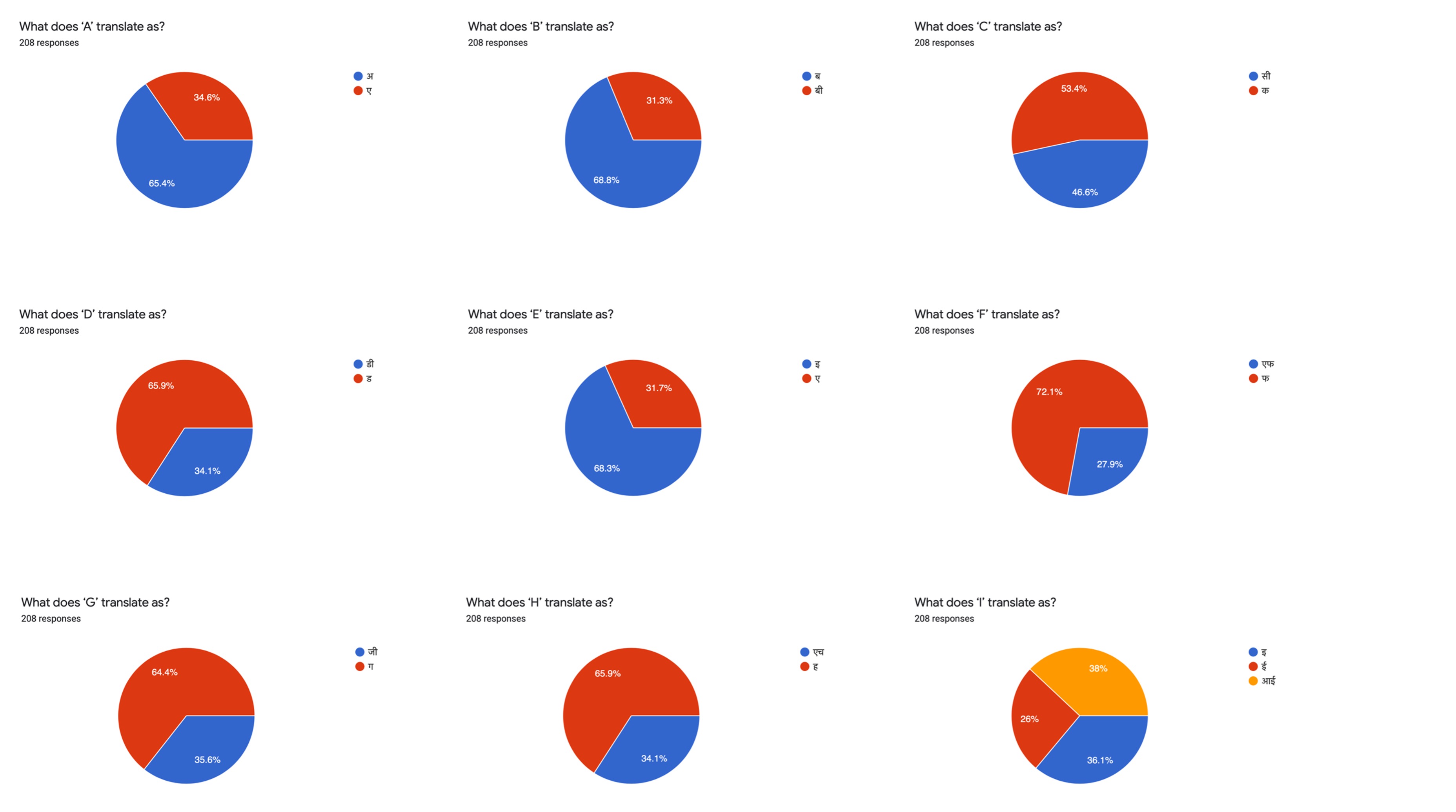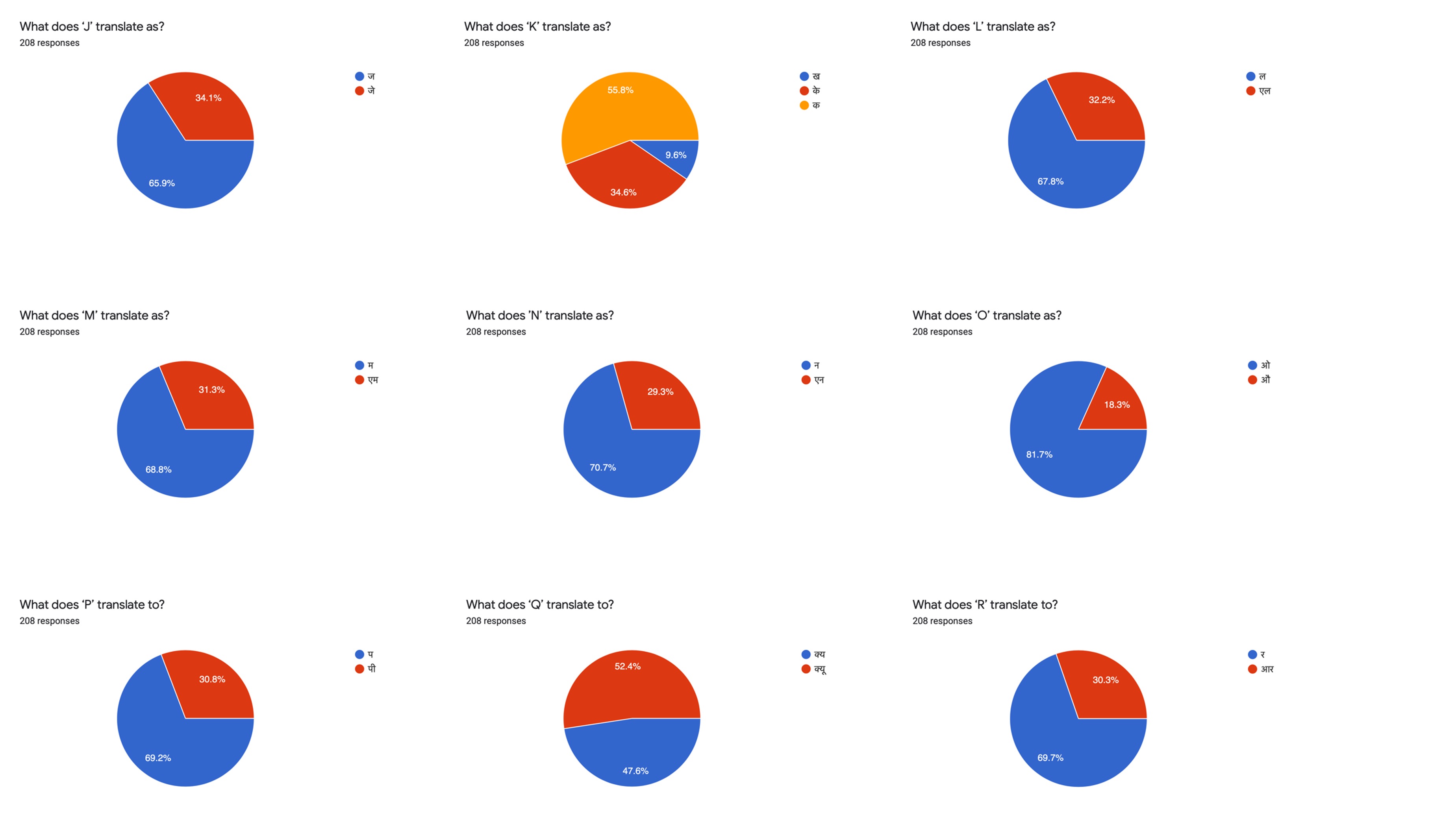On Translation:
Language
English is one of the most popular spoken languages all across the world. Amassing 1.35 billion individuals in the world. In turn, the vast knowledge and awareness about it, have lead it to be incorporated as the primary language in most of our devices.
However, the advent of technology and smartphones has enabled us to use the languages at our disposal in different ways. In India, younger individuals often combine English with Hindi to converse in Hinglish, both through the spoken and written word. On smartphones individuals, translate Hindi words using English alphabets to mimic them phonetically. The development of Arabic chat alphabet or Arabish, a language that used ASCII numercals and other characters to substitute for Arabic letters.1 Konglish, the use of English words in a Korean context, popularly observed in South Korea.2 These are few examples of how the perception and translation between languages are hybridizing.
While the lines between the languages blur, its use is determined by the intuition of its speakers. An opportunity to explore arbitrary, in-between and unknown.

Creating Endi
As a graphic designer and native speaker of Hindi and English, I was curious to explore the relationship between these two languages through typography.
For my research, I began with an attempt to use the Devanagari script on my laptop. Using a Hindi keyboard setting on my English keyboard laptop to type in the Devanagari script is a rather long and cumbersome process. While engaging with the process, I realized there is little to no correlation between the glyphs when typed out in Devanagari to their Latin equivalents.
However, this relationship was different on my smartphone. The availability of English, English(India), Hindi(Latin), and Hindi keyboards allows a range of options, permutations, and combinations to experiment and converse in.
While the nuances of these translations between the two languages are intuitive and sometimes even random, I was curious to experiment with this translation visually.
Introducing Endi!
A variable font that amalgamates both Latin and Devanagri scripts and translates between English and Hindi alphabets.
For my research, I began with an attempt to use the Devanagari script on my laptop. Using a Hindi keyboard setting on my English keyboard laptop to type in the Devanagari script is a rather long and cumbersome process. While engaging with the process, I realized there is little to no correlation between the glyphs when typed out in Devanagari to their Latin equivalents.
However, this relationship was different on my smartphone. The availability of English, English(India), Hindi(Latin), and Hindi keyboards allows a range of options, permutations, and combinations to experiment and converse in.
While the nuances of these translations between the two languages are intuitive and sometimes even random, I was curious to experiment with this translation visually.
Introducing Endi!
A variable font that amalgamates both Latin and Devanagri scripts and translates between English and Hindi alphabets.



Research and Development
During the nascent stages of developing this typeface, I realised it was not inclusive with a singular view on translation between English and Hindi. As a result, I created a survey to reach out to bilingual English and Hindi speakers to learn about their thoughts on translation.
I presented the audience with multiple choices of Devanagari letterforms to complement their optimum translation for their Latin counterparts. As a part of the survey, I also asked individuals to write about the method they considered for translating. It was interesting to learn about the different approaches with which individuals answered the survey. While some mentioned the use of common knowledge, others attributed their selection to transliteration and phonetic associations with the letterforms.
The 208 responses, as shown in the above images, represent the data collected as a part of this survey. It was essential in gathering information that would form the basis for the development of the glyphs and forms for Endi. An amalgamation of different approaches, a collection of collective opinions. Hence, contributing to the development of a hybrid font.
I presented the audience with multiple choices of Devanagari letterforms to complement their optimum translation for their Latin counterparts. As a part of the survey, I also asked individuals to write about the method they considered for translating. It was interesting to learn about the different approaches with which individuals answered the survey. While some mentioned the use of common knowledge, others attributed their selection to transliteration and phonetic associations with the letterforms.
The 208 responses, as shown in the above images, represent the data collected as a part of this survey. It was essential in gathering information that would form the basis for the development of the glyphs and forms for Endi. An amalgamation of different approaches, a collection of collective opinions. Hence, contributing to the development of a hybrid font.
1 Ruben Pater, The Politics Of Design (Amsterdam: BIS Publishers, 2017), p. 37.
2 Owen Pritchard, "Ran Park Explores The Chaos Of "Konglish" In A New Zine", Itsnicethat.Com, 2016 <https://www.itsnicethat.com/articles/ran-park-konglish-zine-200916> [Accessed 1 June 2021].
2 Owen Pritchard, "Ran Park Explores The Chaos Of "Konglish" In A New Zine", Itsnicethat.Com, 2016 <https://www.itsnicethat.com/articles/ran-park-konglish-zine-200916> [Accessed 1 June 2021].